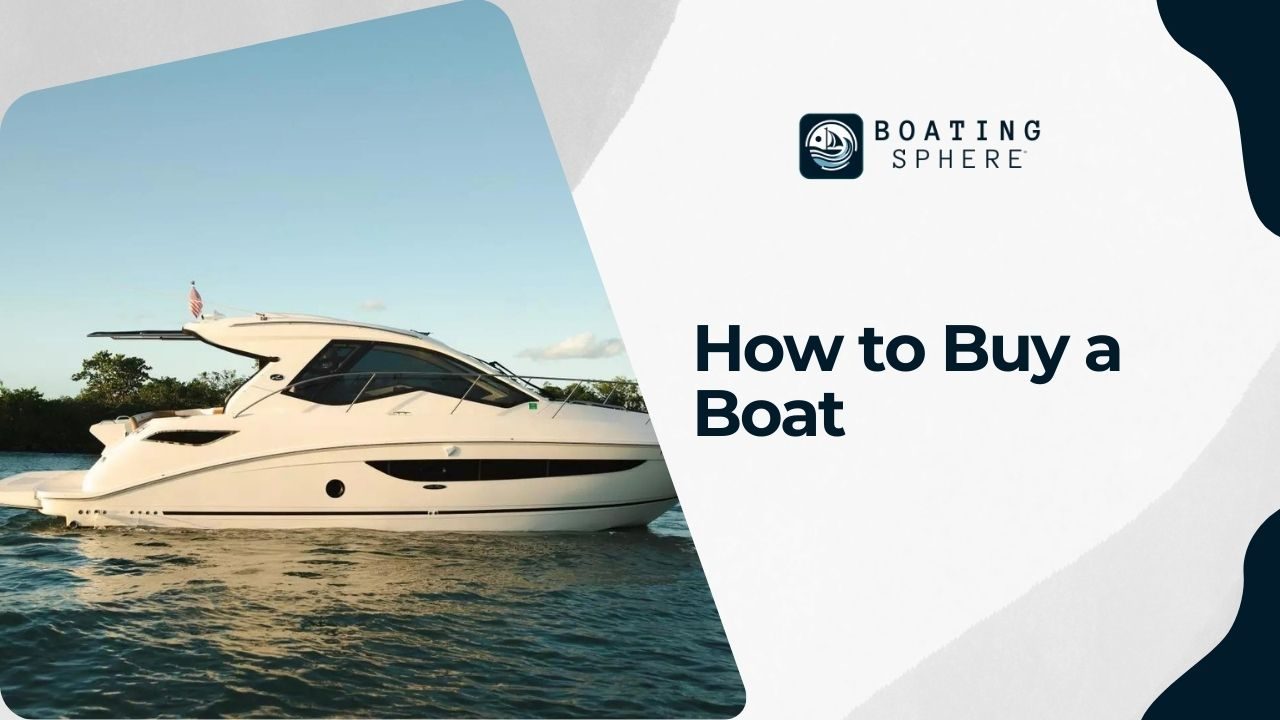Embarking on the journey of boat ownership is an exciting venture. Whether you’re eyeing a compact craft or a grand vessel, choosing between a sailing boat or one powered by motors, the thrill of making your first purchase and casting off is unparalleled.
Before you dive into the market, it’s crucial to answer several key questions:
- What kind of boat suits your needs?
- Where do you plan to use it?
- What are your budget considerations?
This detailed Guide is designed to assist you every step of the way, outlining eight critical steps to follow in your boat-buying adventure.
The Process of Acquiring a Boat
This Guide breaks down the boat-buying process into vital steps, ensuring a comprehensive approach. While variations may vary depending on your location, the core elements remain consistent, encompassing what you need to consider, actions to take, and important aspects to be mindful of during the purchase. Each section is enriched with links to further information and expert advice.
Step 1: Selecting the Ideal Boat Type
It’s easy to fall for a boat at first sight, but it’s important to pause and think critically about your first move in buying a boat: determining the type that best suits your needs. Reflect on your reasons for purchasing a boat and how you intend to use it. Start by addressing these questions, which are central to our ethos at Boatingsphere:
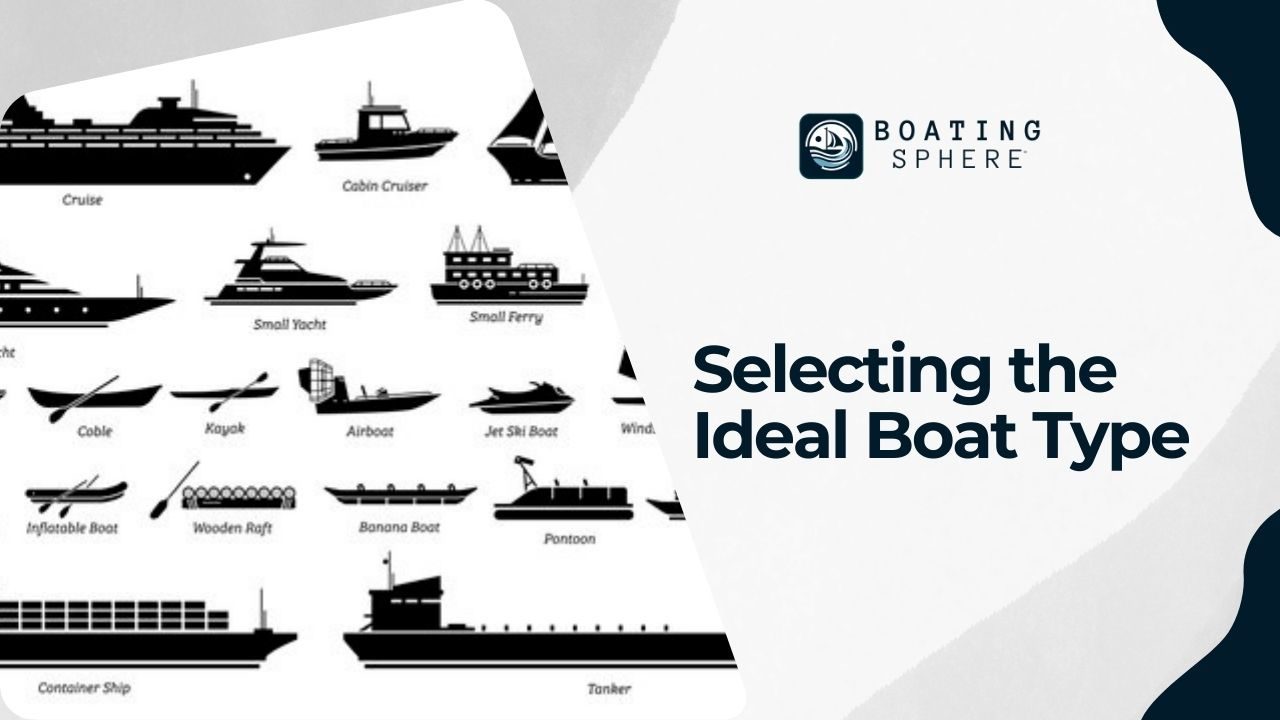
What’s your purpose with the boat?
This is the most influential factor in choosing your boat type. Are your interests in fishing, watersports, or hosting gatherings? You may need a boat that accommodates various activities, including overnight stays.
Are long-distance voyages part of your plan?
Consider whether your boat will be docked at a marina or kept on a trailer.
The world of boats offers a vast array of types. For a detailed list, visit our Guide to the Different Types of Boats.
Where will you use your boat?
The location of your boating adventures significantly influences your choice. For instance, pontoon boats are great for calm lakes and rivers but could be better for rough seas. A cabin boat might be preferable in areas with seasonal weather. For open-sea cruising, a bluewater sailing yacht could be the choice.
What’s your experience level?
It’s tempting to opt for the largest boat your budget allows, but choosing one that matches your skill level is wiser. Overwhelming yourself with a too large vessel can detract from the joy of boating. Select a boat you can confidently handle, ensuring a more relaxed and enjoyable experience for you and your guests.
Our top tip is to be ready to make concessions. List all your boat preferences, but remember that boat buying often involves compromise.
Step 2: Establish Your Budget
The decision to purchase a boat is a significant financial undertaking. It’s crucial to have a comprehensive understanding of all the expenses associated with boat ownership. Establishing a manageable budget for you involves considering the purchase price and the ongoing costs of owning and maintaining a boat.
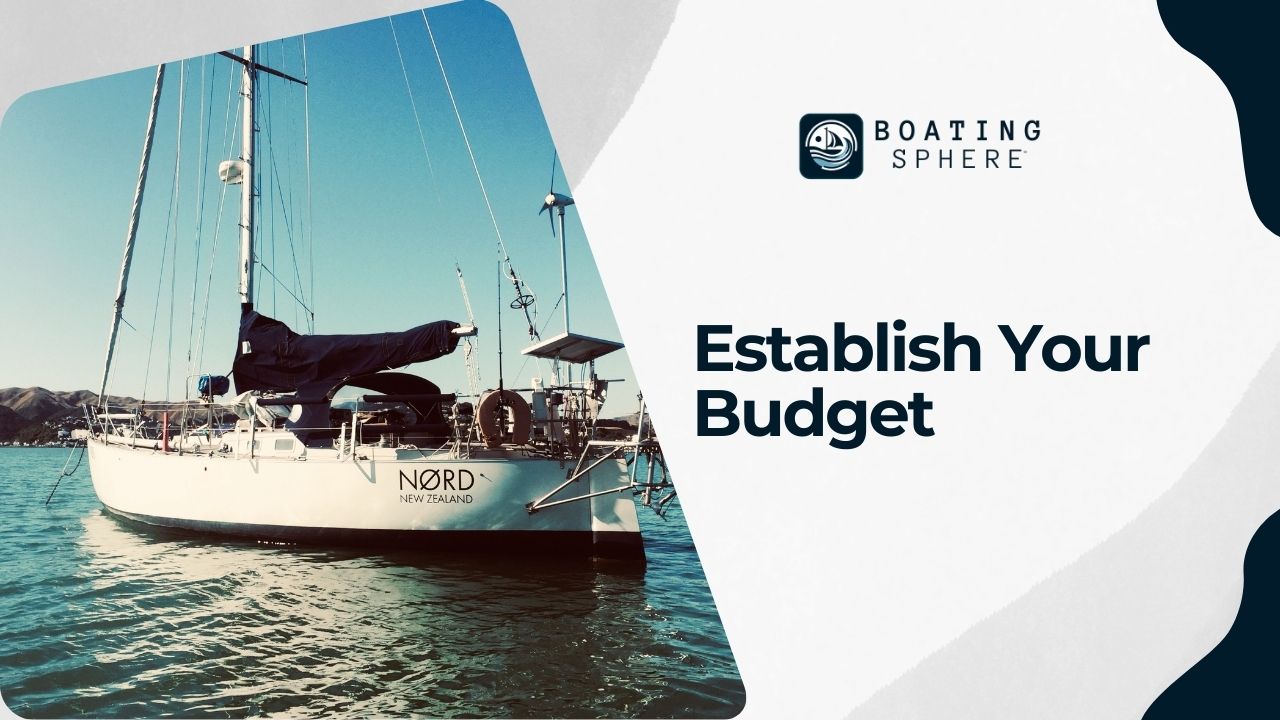
Costs of Acquiring a Boat
- Initial Purchase Price: The boat’s sale price is the starting point in determining your budget. This varies based on new versus used, size, age, location, style, and condition. Utilize boat-sale website tools, such as those on BoatingSphere, to gauge the prices of different boat types in your region. If opting for a loan or marine financing, the initial cost can be spread over months or years. More details can be found in our Guide to Boat Loan Terms.
- Survey and Sea Trial: For new and used boats, a survey and sea trial are usually necessary and typically paid for by the buyer.
- Trailer: A trailer is essential for transporting your boat to launch sites. Often, especially with new ships, a trailer is included in the sale price.
- Equipment: Essential safety equipment like life jackets, paddles, horns, personal locator beacons, EPIRB, marine radio, fire extinguishers, and signal flares are necessary. Additional equipment like fishing gear or watersports accessories may also be on your list.
- Licenses: In Europe and increasingly in the US, a boating license, obtainable after completing a boater safety course, is required.
- Boat Registration: Registration and titling fees vary by country and state and depend on the boat’s size and class.
Annual Boat Ownership Costs
- Marina Fees: For those unable to trailer their boat, marina fees can be a major annual expense. They vary by location, available amenities, and boat size.
- Insurance: Boat insurance costs depend on factors like size, style, age, location, storage, usage areas, your boating experience and record, and the chosen deductible.
- Fuel: The fuel costs for motorboats, including sailboats with motors, depending on engine size, cruising speed, hull type, and fuel type.
- Maintenance and Repairs: A proactive maintenance schedule helps manage costs and maintain your boat’s condition. Costs are typically higher for older boats compared to newer, warranted ones. Whether you undertake maintenance yourself or hire professionals also affects costs.
- Depreciation: New boats depreciate rapidly, often losing 40-50% of their value in the first 8-10 years. Used boats generally depreciate around 5% annually.
Step 3: Choosing Between a New or Used Boat
Deciding to purchase a new or used boat is significant, with each option offering advantages.
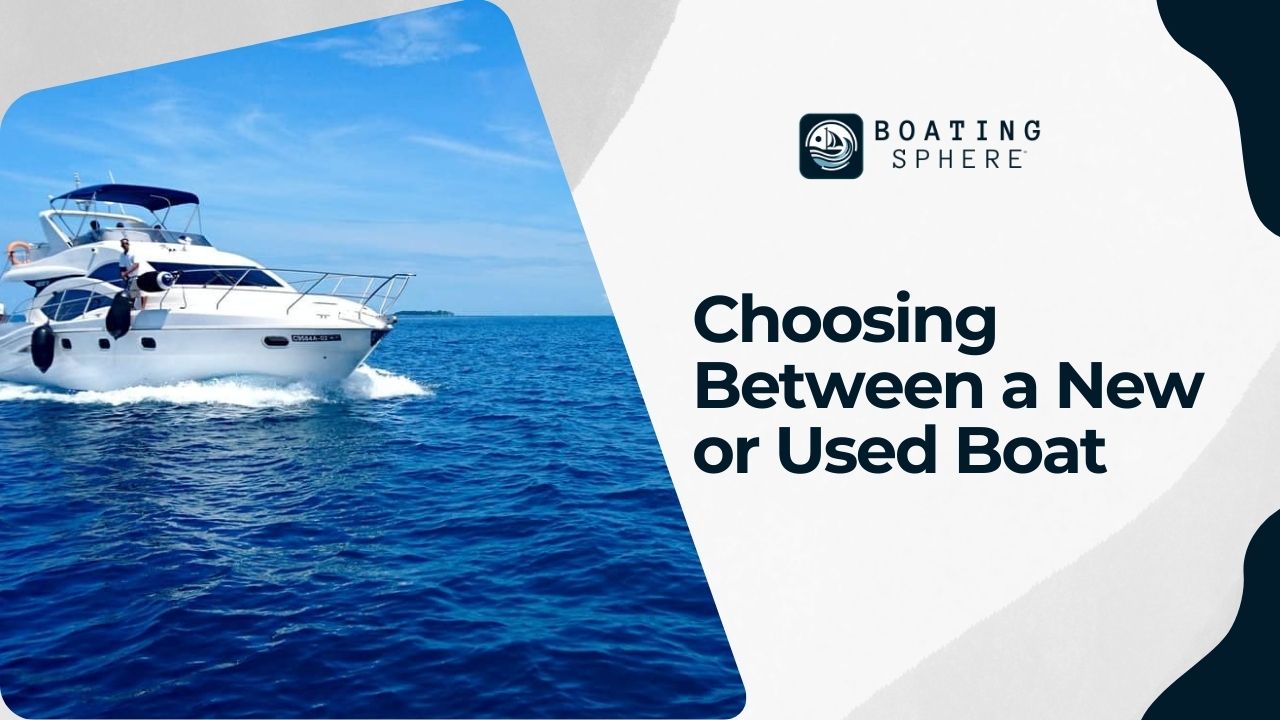
Advantages of Purchasing a New Boat
- Customization: You can select your desired style and model, including engine size and upholstery color. Many new-boat manufacturers offer customization options and additional features packages.
- Guaranteed Condition: There’s no uncertainty about the boat’s past usage or condition.
- Warranty: New boats come with a manufacturer’s warranty.
- Lower Maintenance Costs: Being brand new, these boats require less maintenance.
- Latest Technology: New ships are equipped with the most current technology.
- Financing Options: Buying new often provides more financing choices through dealers, manufacturers, or brokers.
Advantages of Buying a Used Boat
- Cost-Effectiveness: Used boats are generally less expensive than new ones.
- Value for Money: You might find a higher-end model for the same or less cost. Check out our Used Boat Values article to help you with this.
- Reduced Depreciation: Used boats depreciate slower than new boats.
- Quicker Possession: Avoid the long wait times that some new boat models require, especially semi-custom builds.
- In-Depth Survey: A detailed marine survey provides insights into the boat’s condition, with an independent surveyor available to address any queries.
- Additional Equipment: Used boats often come with premium equipment and extras included.
Step 4: Begin Your Boat Search
With a clear understanding of what you need, it’s time to start looking for your boat. Nowadays, there are several avenues for searching boat listings beyond just local classifieds and word of mouth:
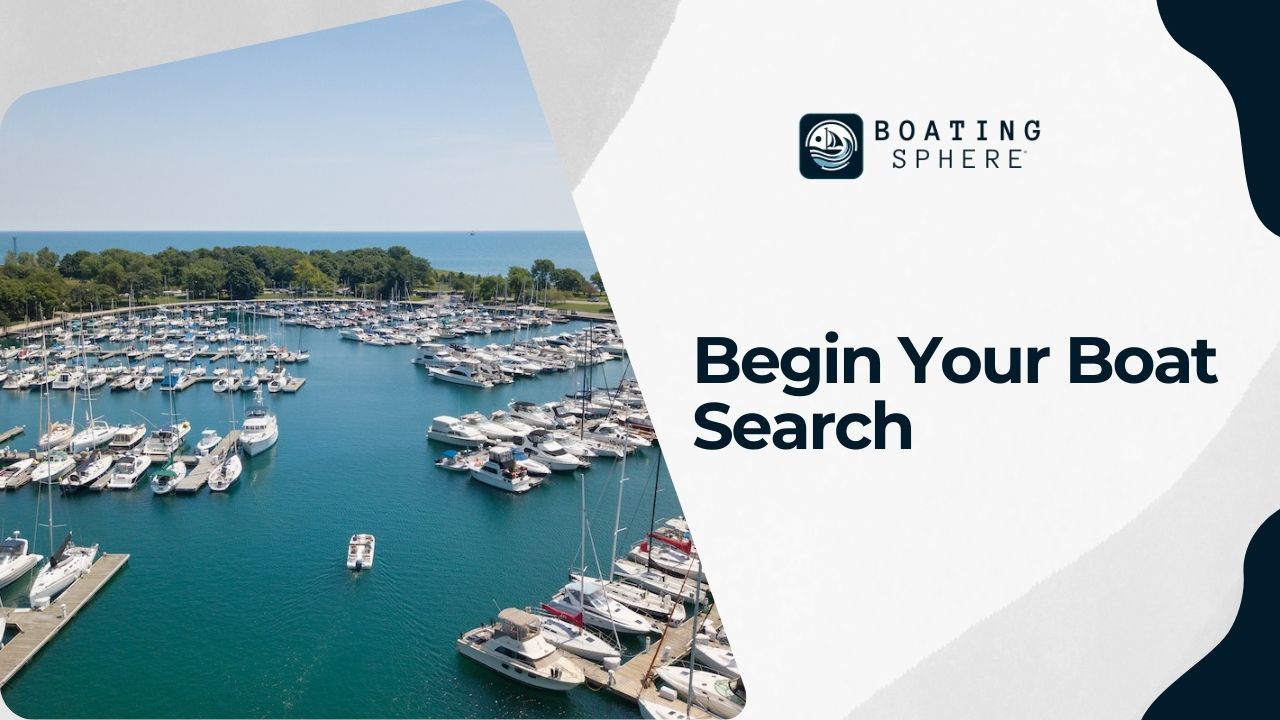
- Boat-Sales Websites: Platforms like Boatingsphere.com allow for a detailed search, letting you specify the type, style, make, model, length, location, and price range. These sites provide extensive photos and videos, full specifications, and contact information for private sellers, dealers, or brokers. These websites are a popular and effective tool for finding new and used boats.
- Boat Brokers and Dealers: Most brokers and dealers offer new and used boats. They may represent a range of brands or specialize in certain ones. Brokers can provide expertise and in-depth knowledge of the boats they sell, assist with research, customize new boats, include extras like trailers, and offer financing options.
- Local Boat Shows: Visiting boat shows, such as the Miami International Boat Show or the Monaco Yacht Show, is an excellent way to see the latest models, compare boats, and arrange sea trials. Boat shows are a hub for experts and new accessories; they offer a celebratory atmosphere for boating enthusiasts.
Step 5: Refine Your Search and View Boats
By now, you should have a clearer idea of the boat you want within your budget. Start refining your choices and arranging viewings with the sellers, whether they’re dealers, brokers, or private individuals. Consider these tips for a wise purchase when considering a used boat.
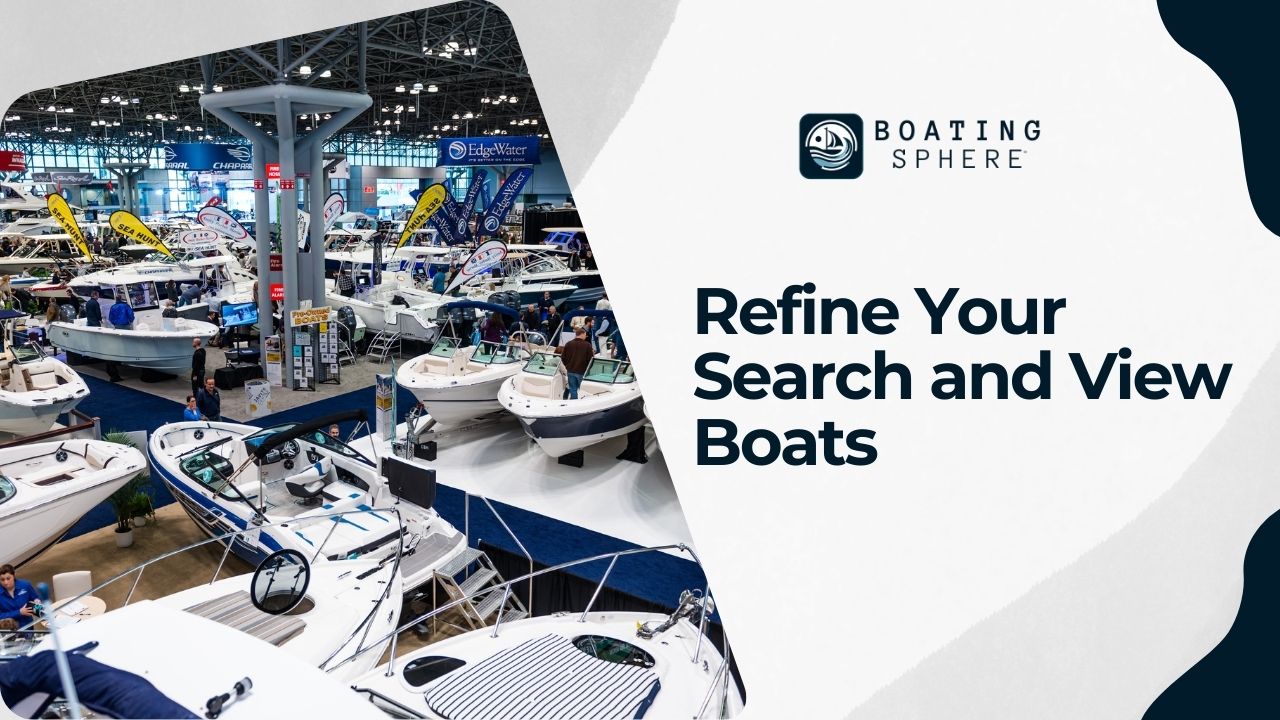
What to Inspect When Buying a Used Boat
Before inspecting a used boat:
- Prepare a checklist of items to examine or inquire about.
- Remember to take detailed notes and photos during your inspection.
- Stay objective and practical, not letting emotions cloud your judgment.
Here’s a checklist for evaluating a used boat:
- Visible Damage: Look for any external or internal damage or repairs.
- Bilge Area: Check for oil leaks from the engine in the bilge area.
- Fuel Tank: Inspect the inside of the fuel tank for corrosion.
- Stringers and Hull Connection: Ensure the stringers are securely attached to the hull.
- Sailing Yacht Components: For sailboats, assess the rigging condition and sails.
- Engine Area: Check for rust around the engine.
- Propeller Condition: Inspect for any cracks in the propeller.
- Engine Oil: Check the oil’s condition.
- Engine Operation: Listen for vibrations or rough sounds while running.
- Electronics: Thoroughly inspect all electronic components.
- Dampness and Mildew: Look and smell for signs of dampness or mildew inside the boat, including in lockers.
- Doors and Hatches: Open and close all doors and hatches to ensure proper functioning.
Questions to Ask When Purchasing a Used Boat
Whether you’re dealing with a dealer or a private seller, asking the right questions is crucial. Here’s a list of essential questions:
- Engine Usage: How many hours has the engine logged?
- Service History: How regularly has the boat been serviced?
- Storage: Where has the ship been stored?
- Warranty: Is there any remaining warranty, and is it transferable? What does it cover?
- Repair History: Has the boat undergone any major repairs or significant problems?
- Seller’s Motivation: Why is the ship being sold?
- Ownership History: How long have they owned the boat, and how many previous owners has it had?
- Sail Condition: What is the condition of the sails, if applicable?
- Maintenance Records: Is there a comprehensive service record available?
Top tip: Engage with other boat owners, particularly those in your region with similar boats. They often willingly share their experiences; if they don’t have the answers, they usually know someone who does.
Step 6: Finalizing the Price
Once you’ve selected your ideal boat, it’s time to negotiate the price. Negotiating is a skill, and preparing for some back-and-forth discussion is key. Remember, this is a business transaction, not a personal matter.
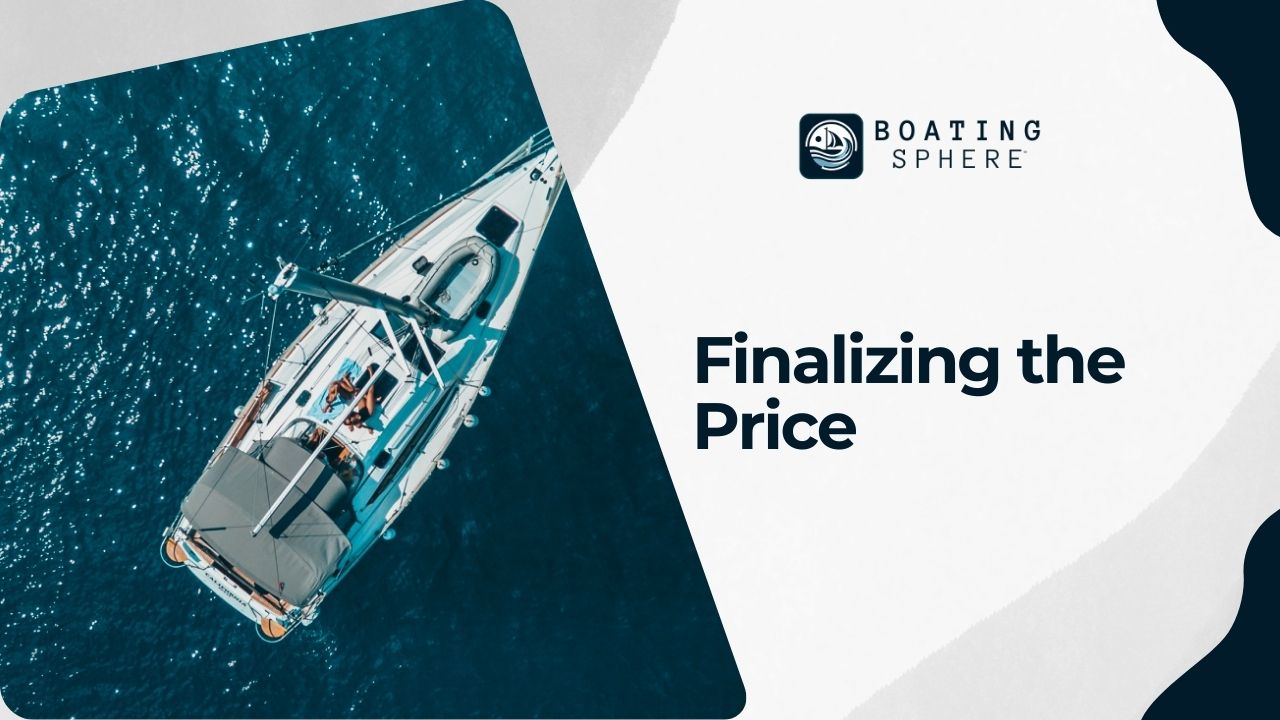
Tips for Effective Price Negotiation
- Market Knowledge: Research thoroughly to understand the boat’s market value.
- Equipment Value: Don’t be influenced by a long list of equipment that doesn’t add value.
- Repair Costs: Factor in potential repair costs and consider this in your offer.
- Emotional Control: Stay composed and be prepared to walk away if necessary; it’s a strong negotiating position.
- Patience: Take your time with the process to avoid hasty decisions.
- Assertiveness: Communicate your requirements, and don’t hesitate to ask for what you need.
- Balanced Perspective: Try to understand all aspects of the negotiation to find a mutually agreeable solution.
Top tip: Ensure you have a detailed list of what’s included in the agreed price, from electronics and safety equipment to smaller items, to avoid any misunderstandings later.
Step 7: Undertaking a Sea Trial and Marine Survey
After negotiating a price with the seller, the next crucial steps in buying a used boat are conducting a marine survey and a sea trial. While smaller boats may not always require these steps, a sea trial is generally advised to test the engine, steering, and electronics. The buyer typically pays for both the sea trial and survey and is responsible for selecting a marine surveyor. It’s common to negotiate a price contingent upon the survey’s outcome.
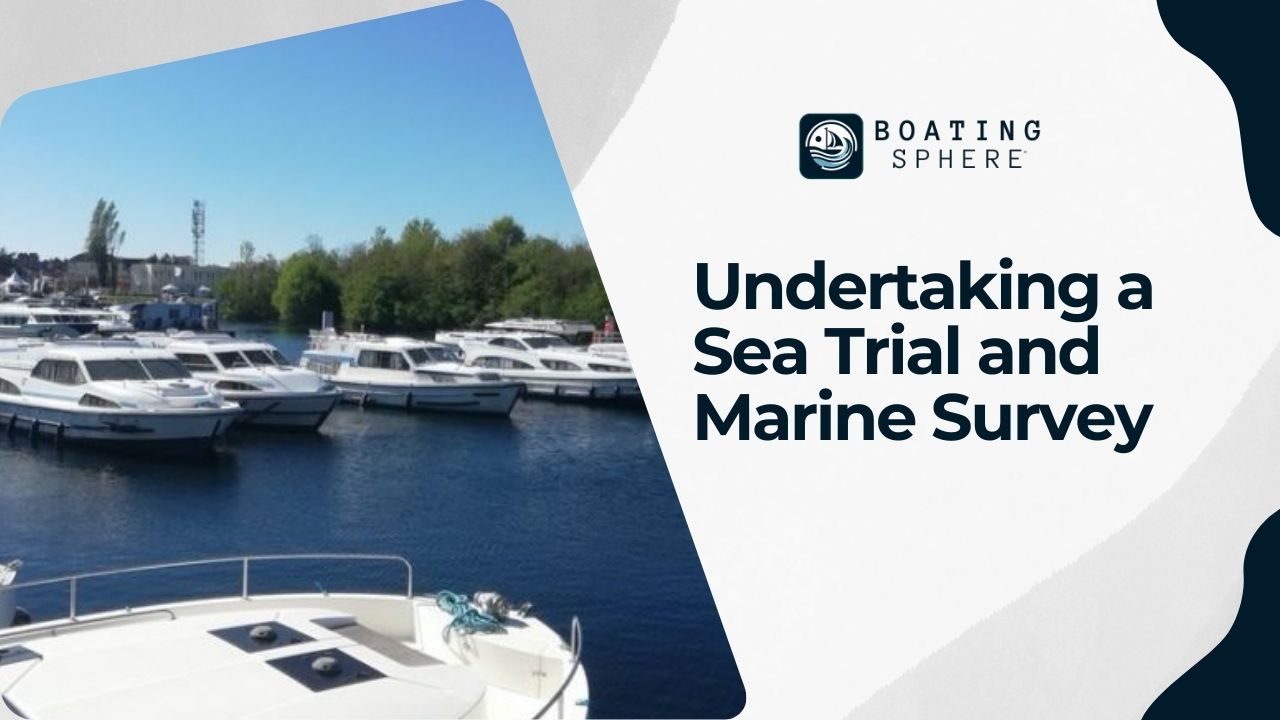
Understanding Marine Surveys
A marine survey, or pre-purchase survey, involves a professional surveyor thoroughly inspecting the boat and producing a detailed report on any faults or damage. The duration and depth of the survey vary depending on the vessel and surveyor. Still, it typically covers aspects such as safety equipment, the engine, fuel and electrical systems, the waste system, navigation lights, structural integrity, and overall condition.
Types of Marine Surveys:
- Insurance Survey: This basic survey provides a general condition overview and is often required by insurance companies.
- Finance Survey: Financial institutions may require this survey before approving boat financing to ensure the boat is a sound investment.
- Full Condition Survey: This is the most detailed survey and examines the boat’s structural integrity, systems, electronics, safety equipment, interior, and more.
Conducting a Sea Trial
A sea trial is a test drive, allowing the potential buyer to see the boat in operation. This includes testing equipment and instruments and assessing the boat’s maneuverability. Typically lasting about an hour, sea trials are conducted on the same day as the marine survey. The surveyor might accompany you and include the trial in their report, but having them present is not mandatory. During the sea trial, consider the following:
- Operate the boat as both driver and passenger.
- Test the engine’s full throttle capacity, especially for water sports use.
- Observe how the boat handles at high speeds and in rough water.
- Listen for any unusual rattles or vibrations.
- Check functionality of all electronics, navigational equipment, switches, windlass, stabilizer system, batteries, generator, and bilge pump.
- For sailboats, hoist the sails, preferably on a windy day, to test performance.
Top tip: Choose an independent surveyor rather than one suggested by the seller. While surveyors are expected to be impartial, avoiding potential conflicts of interest is advisable.
Step 8: Finalizing the Purchase and Receiving Your Boat
Congratulations, your boat purchase is almost complete! Finalizing the paperwork and payment might seem complex, but it’s usually straightforward.
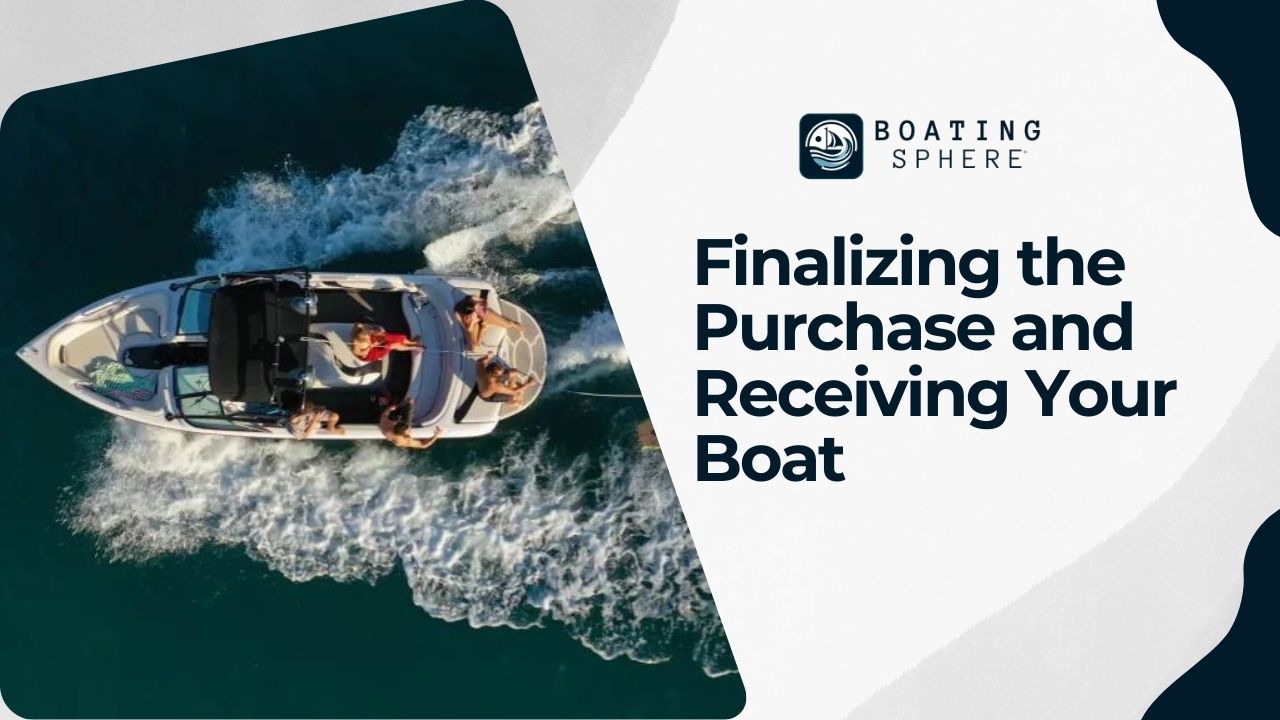
Paperwork Verification: Essential documents include:
- Boat Title and Registration: In the US, this involves a state-issued boat title proving ownership and a registration number displayed on the boat’s bow, renewed biennially. In the UK, registration is managed by the UK Ship Register, varying based on the boat’s size and usage.
- Warranty Cards: Crucial for new and used boats (if still under warranty).
- Builder’s Certificate: Mainly for new ships, detailing the boat’s specifications and verifying ownership. Also beneficial for used boats.
- Maintenance Records: Relevant for used boats, showing the boat’s condition, maintenance history, and servicing details.
- Payment Arrangement: Payment can be made in full or through marine financing, available from banks, specialist lenders, dealers, or online lenders, with varying repayment terms.
- Signing the Contract: The Bill of Sale, or Boat Purchase Agreement, outlines the sale terms. It should include the boat’s description, hull identification number (HIN), purchase date, sale price, signatures of both parties, contact information, state registration number (US), and the trailer’s Vehicle Identification Number (VIN) if included.
List of Things to Check After Purchase:
- Boat License: Acquiring a boat license is legally required in many regions. The process typically involves a boater safety course.
- Boater Education Course: Independent of licensing requirements, these courses are beneficial for safe and skilled boat operations.
- Boat Registration: Almost always required; registration can usually be completed online. It involves a form, proof of ownership, and a fee based on boat size.
- Boat Insurance: While not legally mandatory everywhere, marinas and finance lenders often require insurance. It’s a wise choice for protection. Coverage levels vary, so research to find what best suits your needs.
- Boat Storage: Options include trailering and storage at home, marina berthing, dry stacks, swinging moorings, or dockage at marinas. Considerations depend on boat size and convenience.
- Maintenance Schedule: Establish an annual maintenance schedule to keep your boat in top condition, preventing costly breakdowns and replacements.
- Boat Names: Have you successfully purchased a boat using this guide? Then, there is one last thing left to check. Have you ever thought about the name of the ship? Check out hundreds of suggestions that will give you ideas in our best boat names article.
Was this page helpful?

